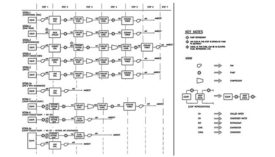Home » data centers
Articles Tagged with ''data centers''
Integrated Automated Controls for Data Centers-Philosophy & Approach
CONTRIBUTED BY: Syska Hennessy
May 5, 2014
Building Automation
Making BAS Accessible — But Protected From Cyberattack
The Target hacking debacle is still under investigation, but there are lessons to be learned on protecting personal information.
April 1, 2014
Get our new eMagazine delivered to your inbox every month.
Stay in the know on the latest HVACR engineering trends.
SUBSCRIBE TODAY!Copyright ©2024. All Rights Reserved BNP Media.
Design, CMS, Hosting & Web Development :: ePublishing







